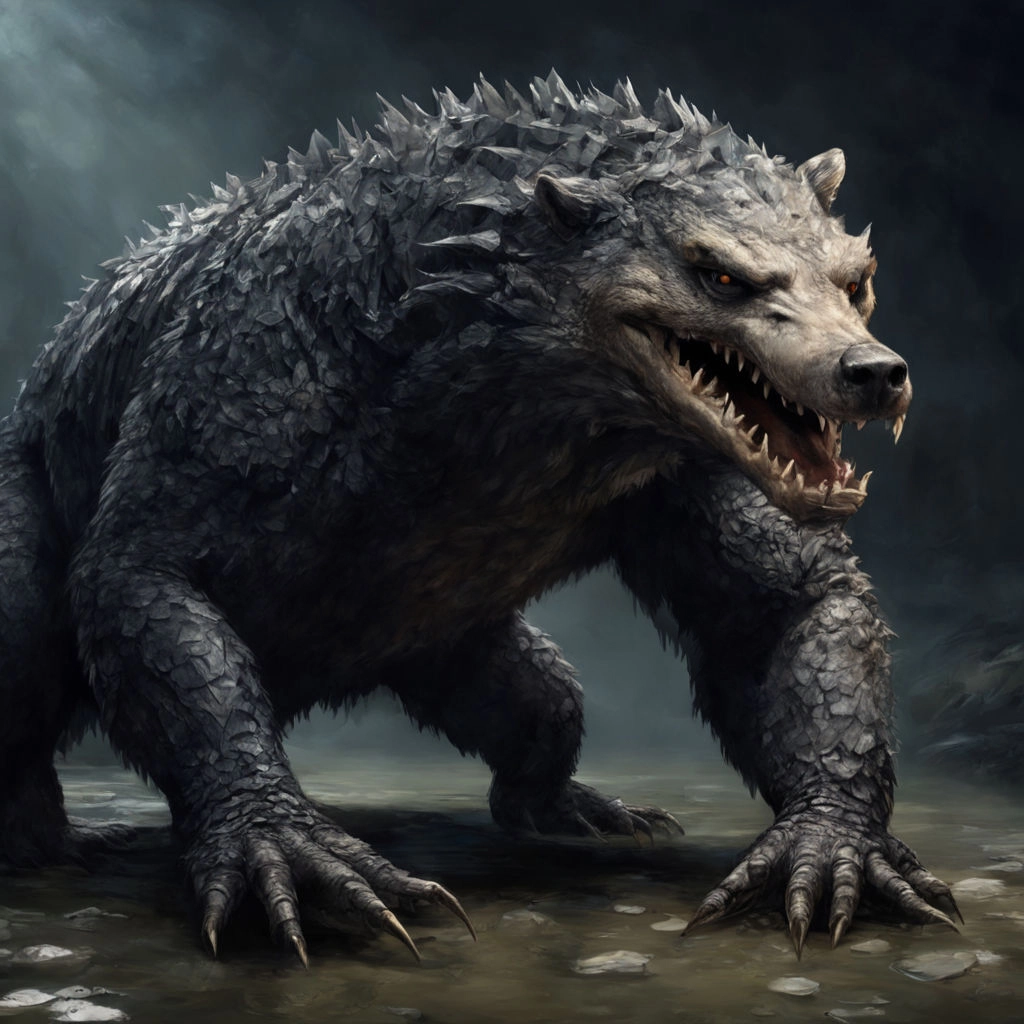The Legend of the Bunyip: Mystic of Australia

Introduction to the Bunyip Legend
In the vast and untamed wilderness of Australia, where the sun’s last rays dance upon the waters of rivers, lakes, and swamps, there lurked a fearsome creature of legend: the Bunyip. Whispers of its existence echoed through the rugged landscape, instilling a primal fear in the hearts of those who dared to venture near its domain. Tales of the Bunyip’s monstrous form varied, but all agreed on its insatiable appetite for human flesh.
The Haunting Presence of the Bunyip
As night descended and the darkness enveloped the land, the air would grow heavy with an eerie stillness, broken only by the haunting cry of the Bunyip. This otherworldly sound, said to reverberate through the night like a mournful lament, sent shivers down the spines of even the most seasoned Bushmen. It was a warning, a sinister reminder of the peril that awaited any who dared to challenge the creature’s territory.
Predatory Nature and Prey
Under the cloak of darkness, the Bunyip would emerge from the murky depths, its massive form gliding silently through the waters, leaving only ripples in its wake. With eyes gleaming like fiery coals, it prowled the shores in search of unsuspecting prey, its hunger driving it ever forward. Women and children were particularly vulnerable to its predations, and tales of disappearances only fueled the terror that gripped the local communities.
The Persistent Legend
Generations passed, and the legend of the Bunyip persisted, woven into the fabric of Australian folklore. Though skeptics dismissed it as mere myth, the primal fear it inspired lingered, a testament to the power of the unknown in the vast and mysterious land down under. And so, the Bunyip remained a specter of the night, a reminder of the untamed wilderness that lay just beyond the edges of civilization.
Evolving Depictions in First Nations Lore
In the rich tapestry of Australian First Nations lore, the Bunyip emerged as a creature of both awe and terror, its depiction evolving over time to reflect changing perceptions and attitudes. Initially feared as a fearsome predator with sharp tusks, capable of devouring unsuspecting humans, the Bunyip loomed large in the collective imagination, a symbol of the untamed wilderness and the dangers lurking within.
From Fearsome Predator to Gentle Guardian
As fear of the Bunyip gradually waned, so too did its reputation as a ruthless man-eater. Instead, descriptions began to shift, portraying the creature as a more benign presence in the landscape. No longer a menace to be feared, the Bunyip was often depicted as a gentle grazing animal, its shaggy fur and placid demeanor standing in stark contrast to its former ferocity.
Enigmatic Appearance
Yet, even as the Bunyip’s nature softened, its appearance remained enigmatic and varied. While some accounts described it as possessing shaggy fur reminiscent of a terrestrial mammal, others spoke of scales or feathers adorning its form, hinting at its otherworldly origins. This diversity in description only added to the mystique surrounding the creature, fueling speculation and wonder among those who sought to unravel its secrets.
Adaptations and Abilities
Despite its imposing size, often likened to that of a small cow, the Bunyip possessed a remarkable ability to adapt to its environment. Some tales spoke of its amphibious nature, with flippers for swimming allowing it to navigate the watery depths with ease. Yet, under the cover of darkness, these flippers were said to transform into legs, enabling the Bunyip to roam the land in search of sustenance.
Cultural Transformation and European Influence
As the passage of time blurred the lines between myth and reality, the once terrifying tale of the Bunyip underwent a profound transformation. Initially woven into the rich tapestry of First Nations narratives, the legend took on new dimensions when encountered by European settlers in the 18th and 19th centuries. With the arrival of these newcomers, the story of the Bunyip began to lose its ominous edge, gradually morphing into a different kind of folklore.
From Fear to Mockery
No longer viewed with the same fear and awe, the Bunyip found itself relegated to the realm of mockery and disdain. By the 1800s, the term had evolved into an insult, a derogatory label hurled at those deemed to be imposters or frauds. The once formidable creature of legend had been reduced to a symbol of deception, its name synonymous with deceit in the eyes of the settlers.
Benign Transformation and Children's Stories
But perhaps the most significant shift in the Bunyip’s portrayal came with its transformation from a man-eating monster to a gentle herbivore. As settlers adapted the legend to fit their own worldview, the creature’s menacing reputation gave way to a more benign interpretation. No longer a threat to human life, the Bunyip became a harmless creature of the imagination, its ferocious appetite replaced by a preference for plants and foliage.
Conclusion
In this new incarnation, the Bunyip found a place in children’s stories, where it became an amiable character beloved by young and old alike. Gone were the days of fear and dread; instead, the Bunyip became a source of laughter and wonder, a whimsical figure who roamed the Australian wilderness in search of adventure. Thus, the evolution of the Bunyip serves as a testament to the ever-changing nature of folklore and storytelling. What was once a tale of terror became a symbol of resilience and adaptation, reflecting the shifting cultural landscape of Australia as it navigated the complexities of colonization and cultural exchange.

